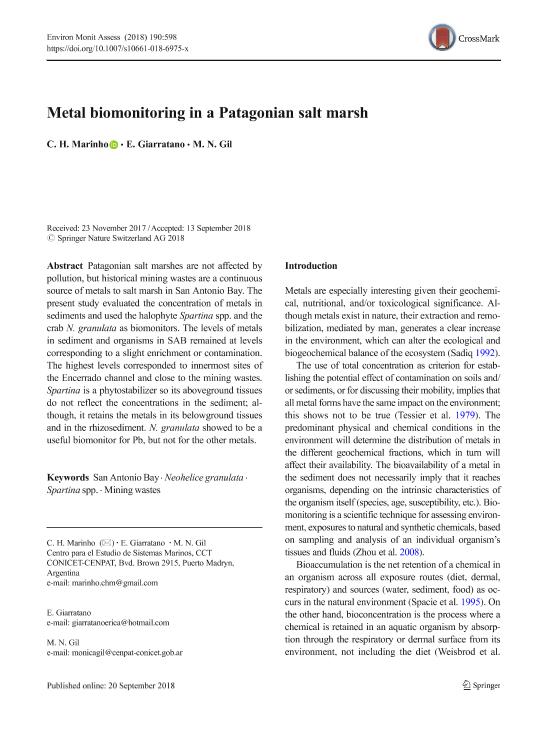Artículo
Metal biomonitoring in a Patagonian salt marsh
Fecha de publicación:
10/2018
Editorial:
Springer
Revista:
Environmental Monitoring and Assessment
ISSN:
0167-6369
e-ISSN:
1573-2959
Idioma:
Inglés
Tipo de recurso:
Artículo publicado
Clasificación temática:
Resumen
Patagonian salt marshes are not affected by pollution, but historical mining wastes are a continuous source of metals to salt marsh in San Antonio Bay. The present study evaluated the concentration of metals in sediments and used the halophyte Spartina spp. and the crab N. granulata as biomonitors. The levels of metals in sediment and organisms in SAB remained at levels corresponding to a slight enrichment or contamination. The highest levels corresponded to innermost sites of the Encerrado channel and close to the mining wastes. Spartina is a phytostabilizer so its aboveground tissues do not reflect the concentrations in the sediment; although, it retains the metals in its belowground tissues and in the rhizosediment. N. granulata showed to be a useful biomonitor for Pb, but not for the other metals.
Palabras clave:
San Antonio Bay
,
Neohelice granulata
,
Spartina spp
,
Mining wastes
Archivos asociados
Licencia
Identificadores
Colecciones
Articulos(CESIMAR)
Articulos de CENTRO PARA EL ESTUDIO DE SISTEMAS MARINOS
Articulos de CENTRO PARA EL ESTUDIO DE SISTEMAS MARINOS
Citación
Marinho, Carmen Haydee; Giarratano, Erica; Gil, Monica Noemi; Metal biomonitoring in a Patagonian salt marsh; Springer; Environmental Monitoring and Assessment; 190; 10; 10-2018; 1-14
Compartir
Altmétricas




